January Happenings
We can officially say winter has arrived, given the frigid temperatures and brutal winds we’ve been experiencing lately. EAGC finished out 2024 with mild weather and a burst of activities centered around the holidays. Most members probably have been very happy to take a deep breath and relax after all the hubbub of the season. There are still some great photos of the festivities to share, however, including Betsy’s notorious Swap Shop Party. Let’s start with the spectacular food spread, prepared by Betsy and a few of her holiday elves:
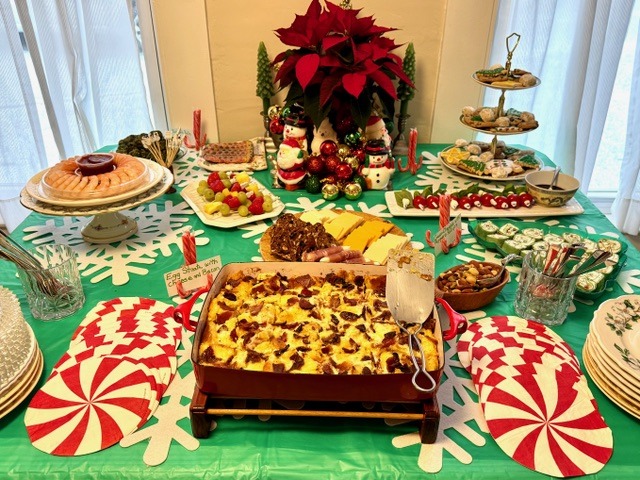
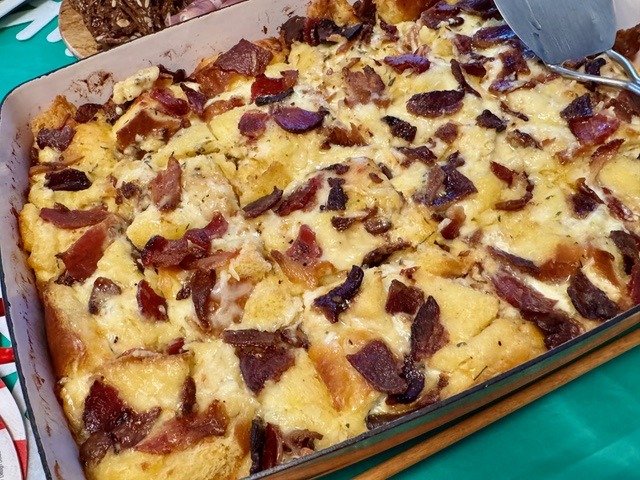
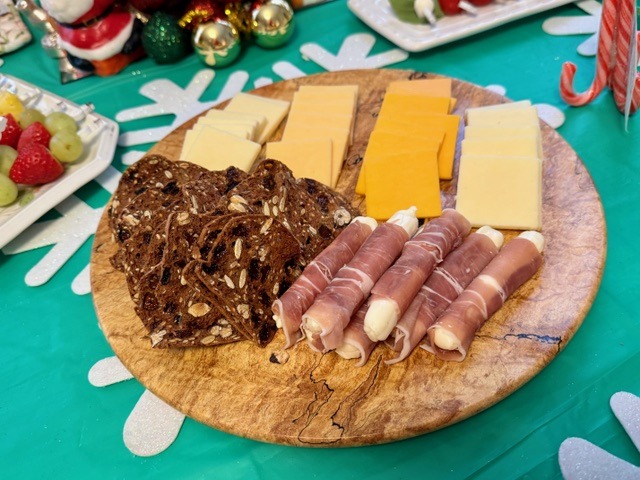
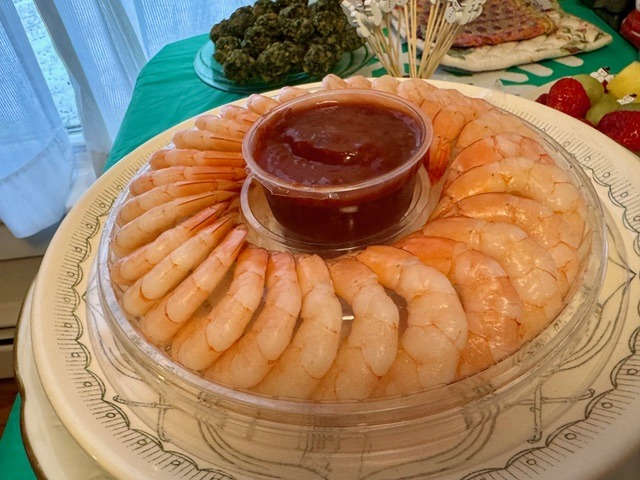

Followed by the one-of-a-kind gift swap and lots of laughs:
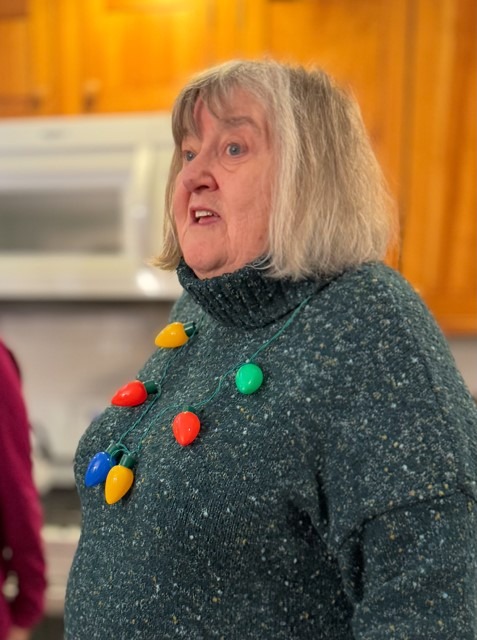
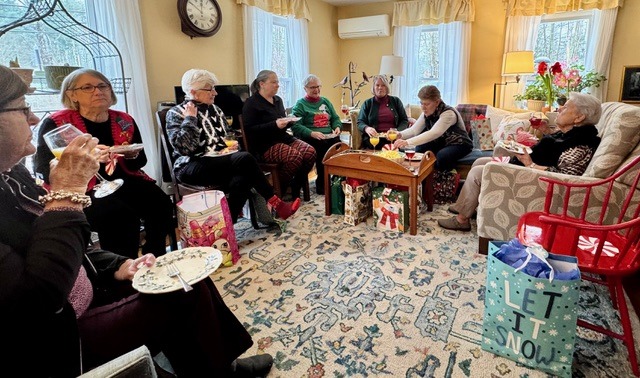
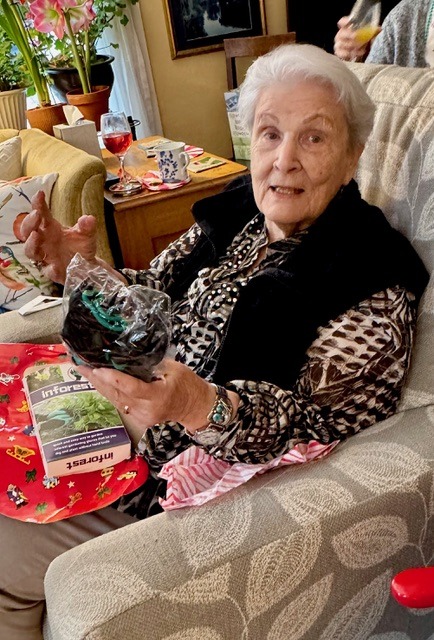
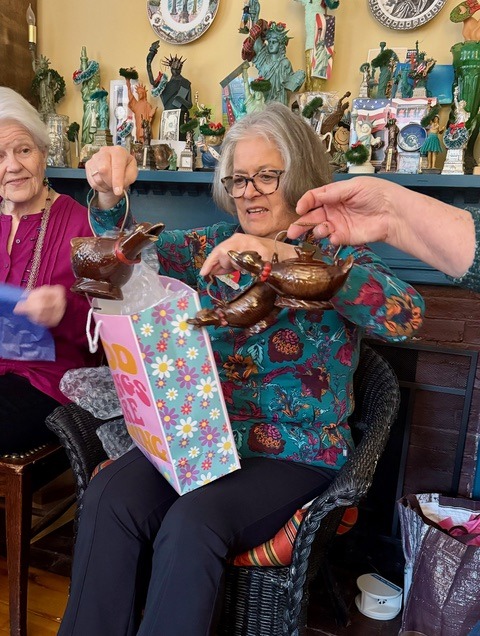
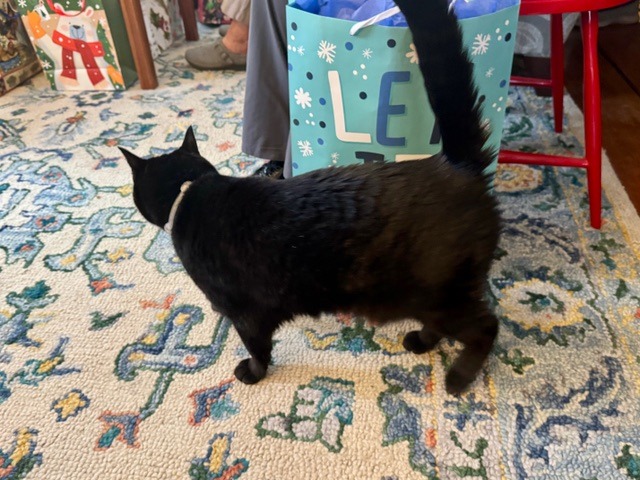
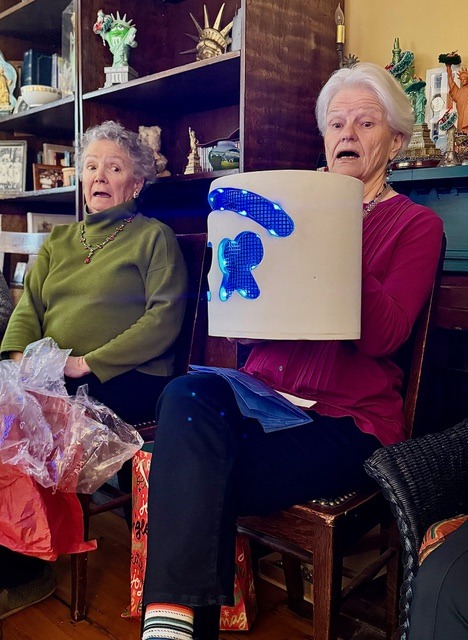

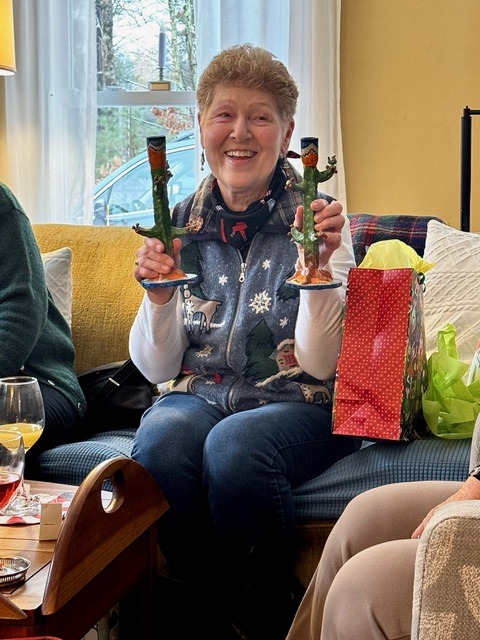
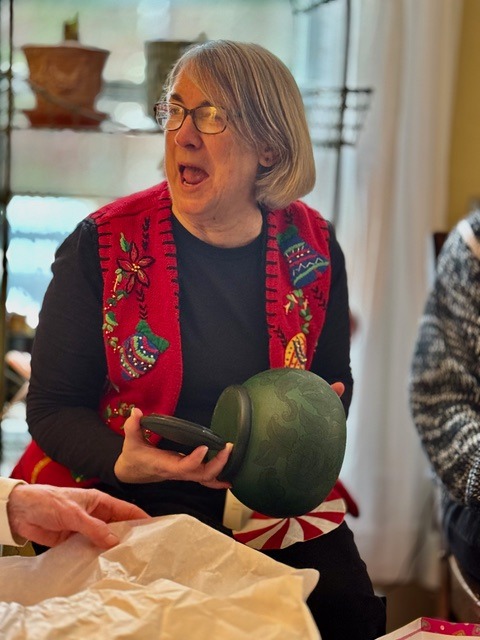
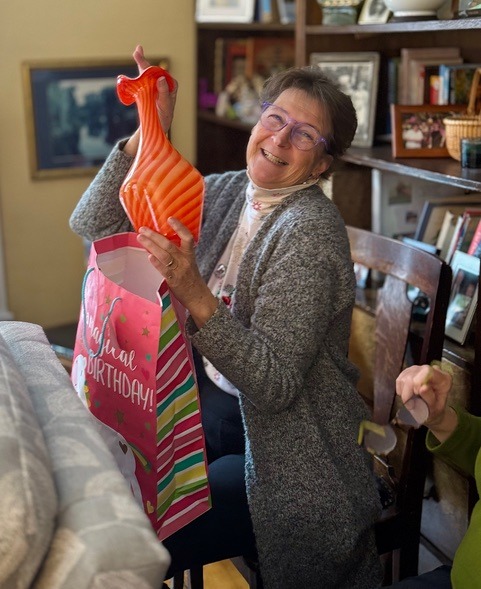
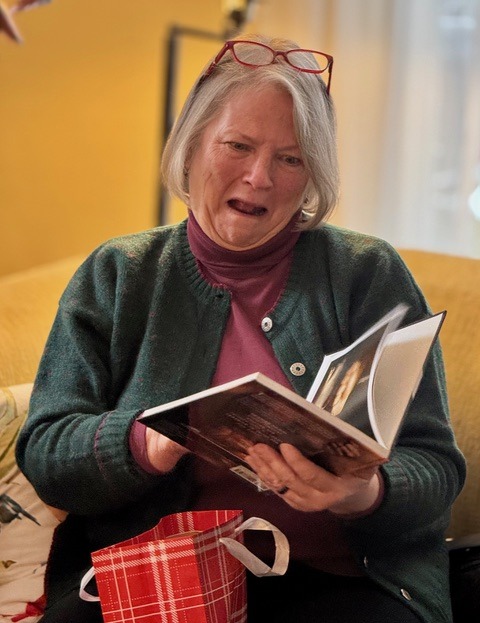
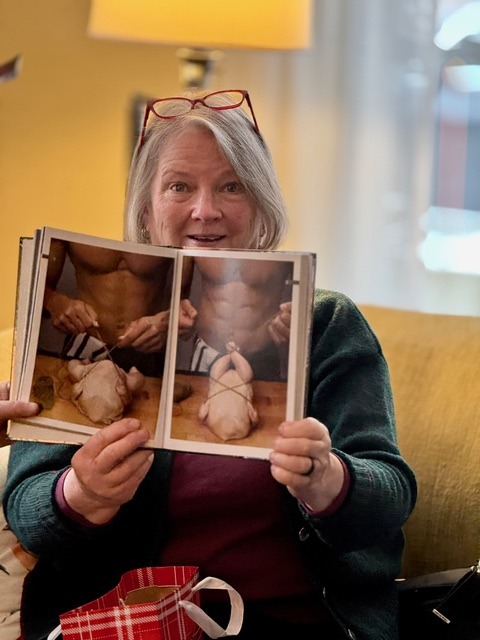
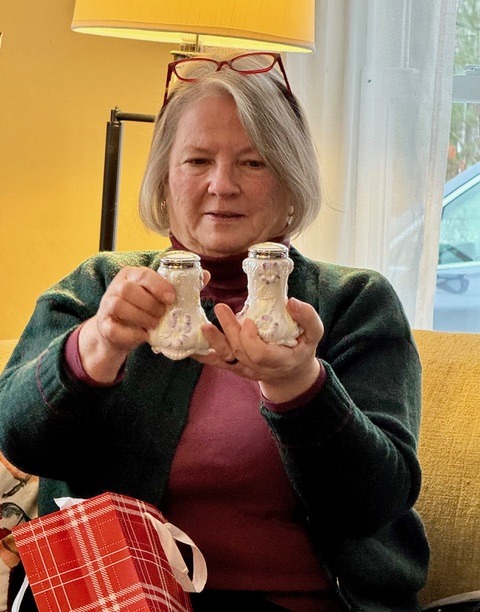
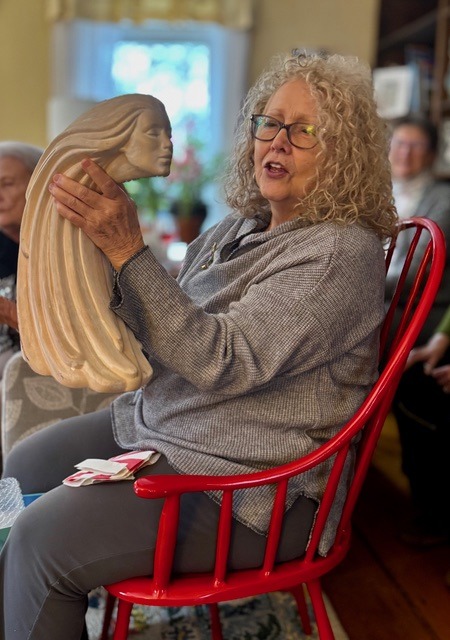
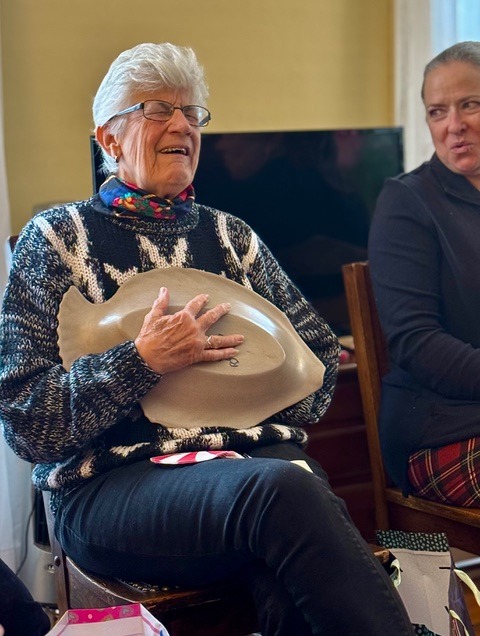
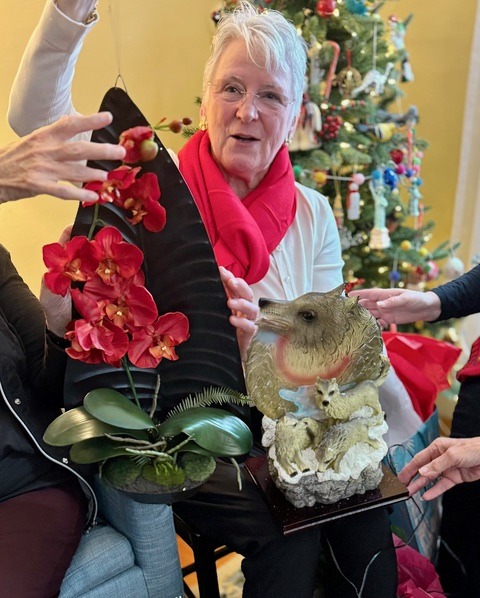
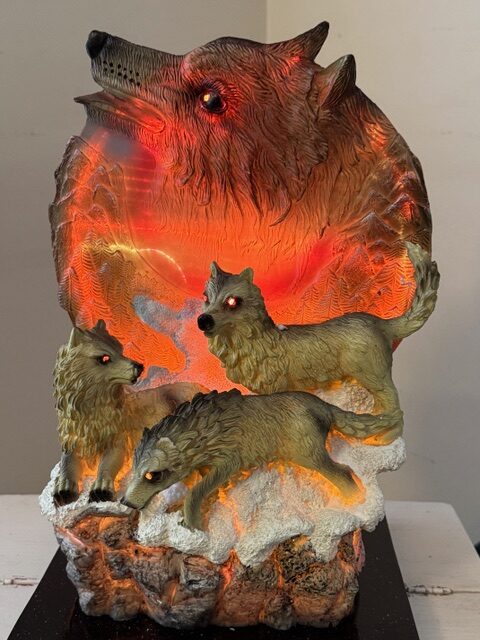
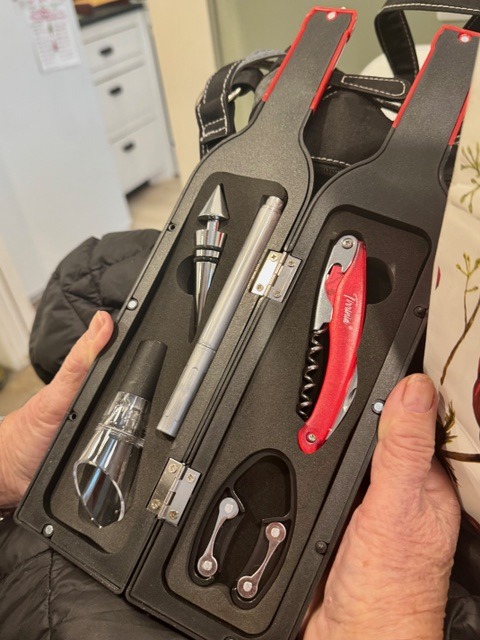
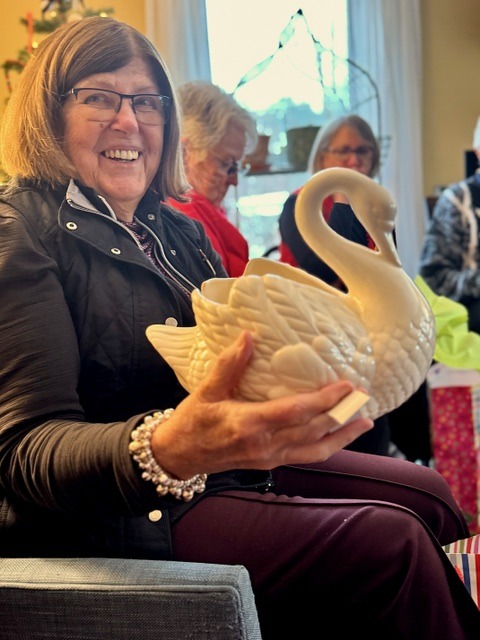
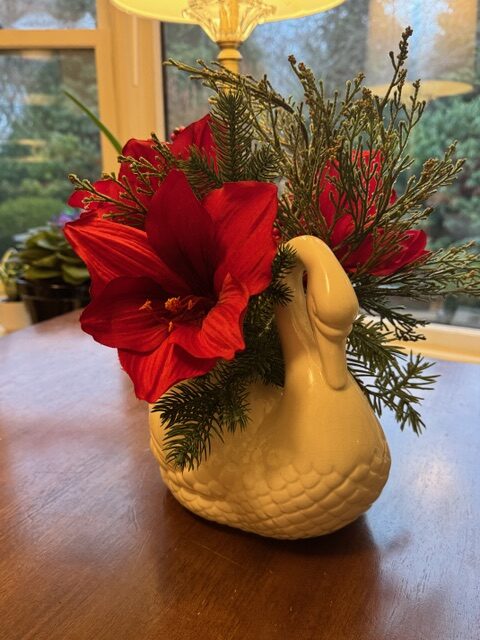
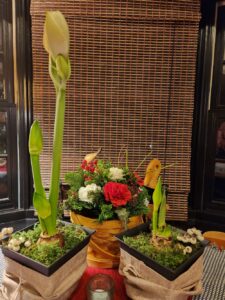
Amaryllis always seem to have their own agenda.
These amaryllis from the Yuletide Fair were planted at the same time, treated with the same conditions, and expected to bloom between mid-December and mid- January. Well, here is my pair …. doing their own thing. Amazingly, the one on the left has three bloom stalks while the one on the right has two!
I hope our customers are having such luck.
Pat N
Members: How are your amaryllis doing?
Amaryllis weren’t the only holiday florals in member homes. Lee C. held a Holidays Greens Workshop in mid-December, attended by 12 members who created some festive arrangements to add to their holiday decor. Lots of concentration produced some beautiful results:
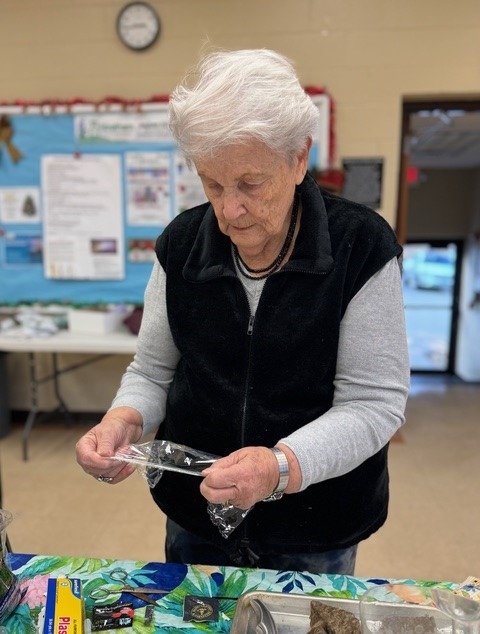
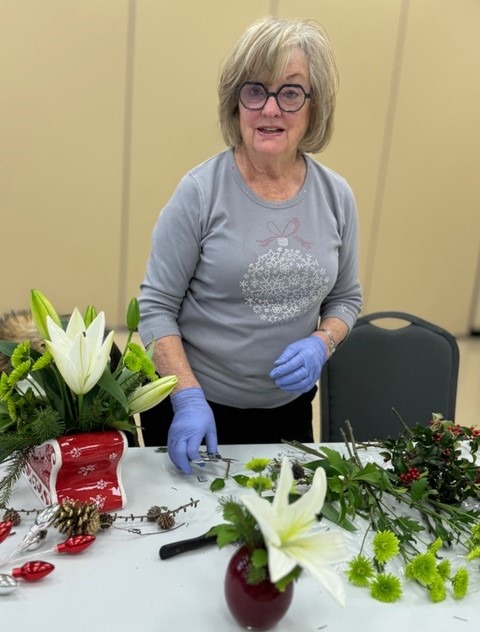
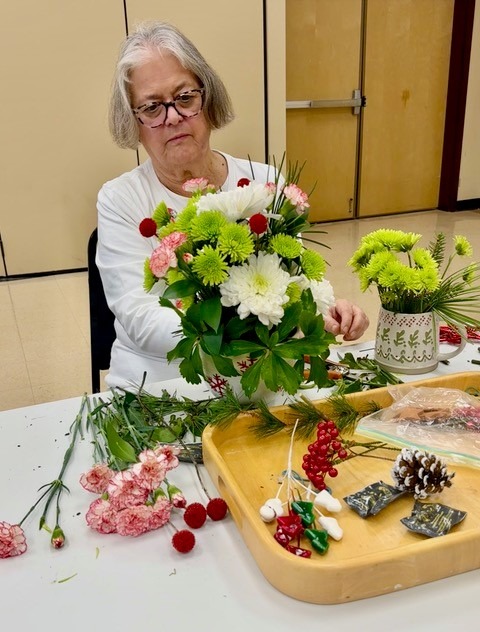
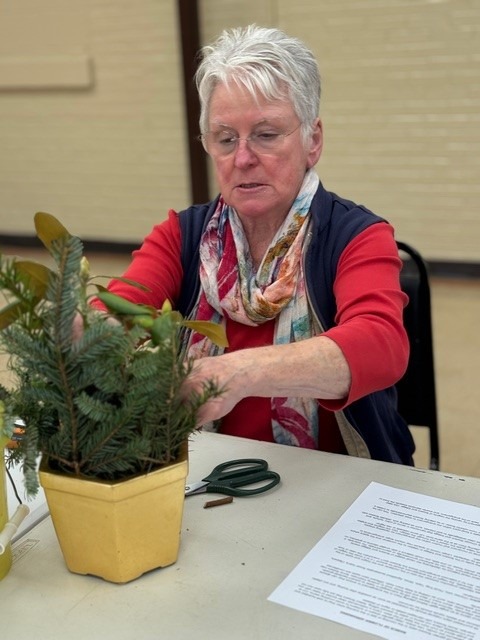
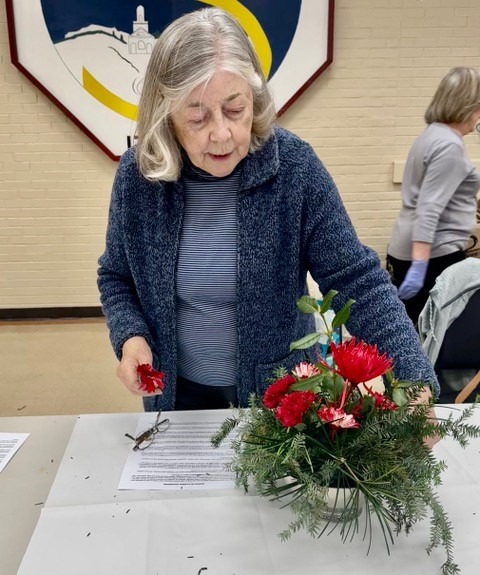
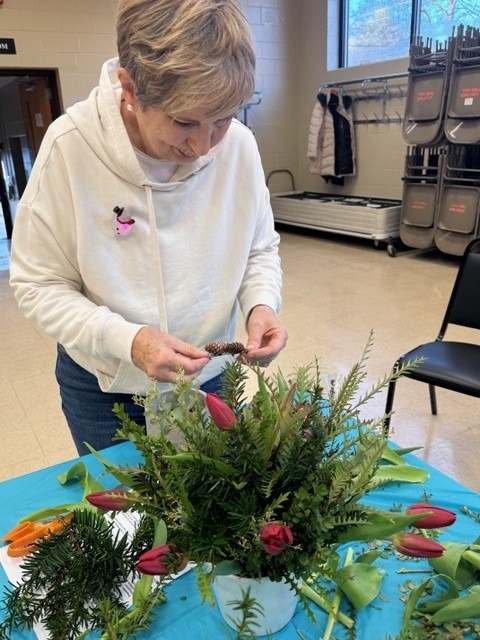
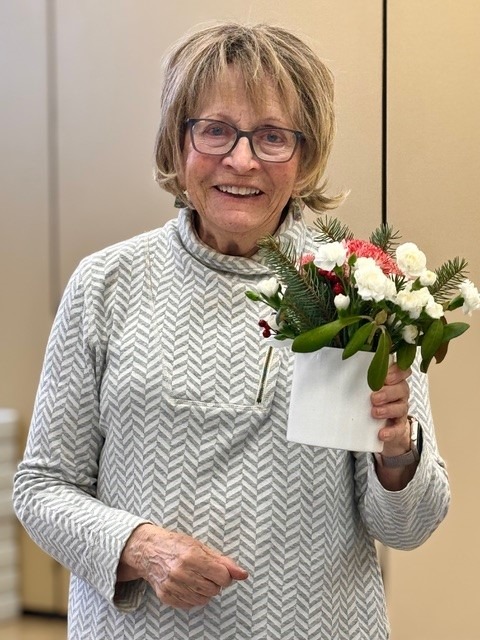
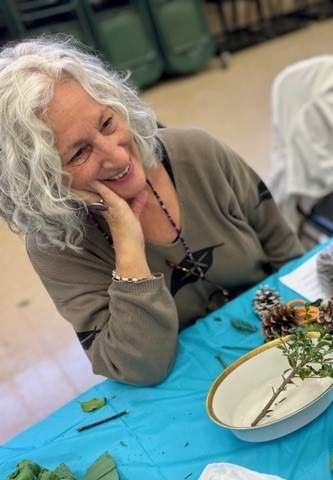
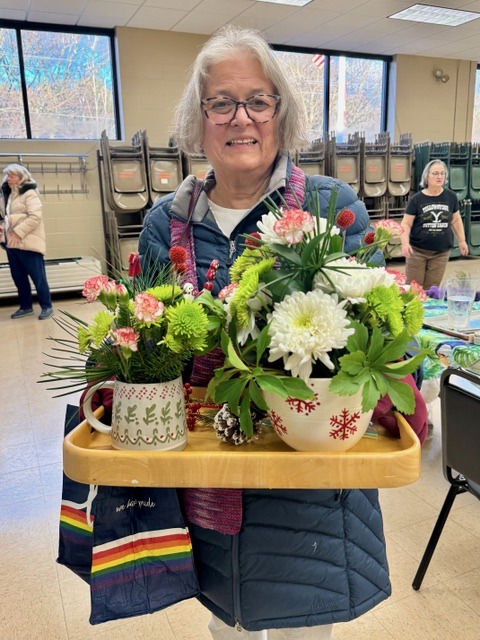
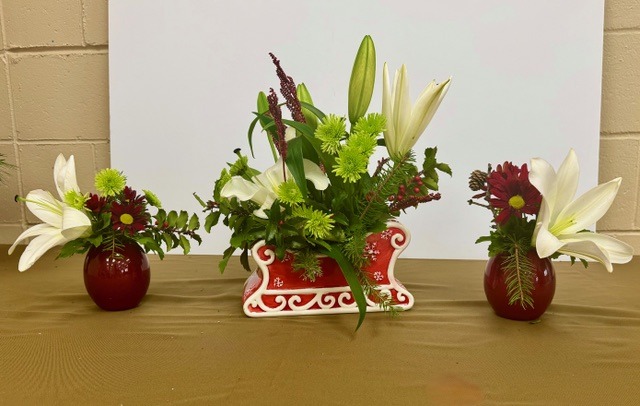
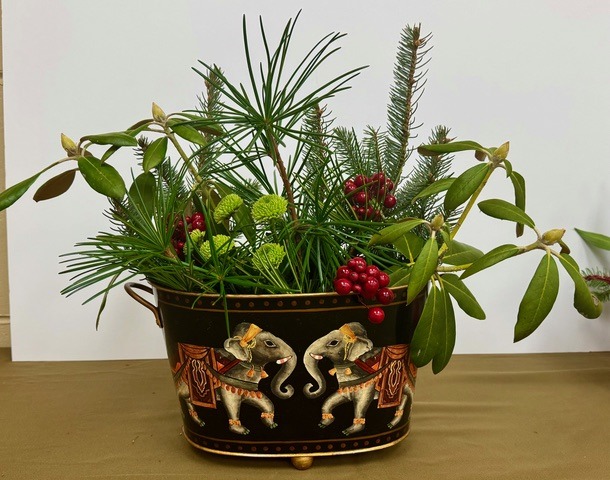
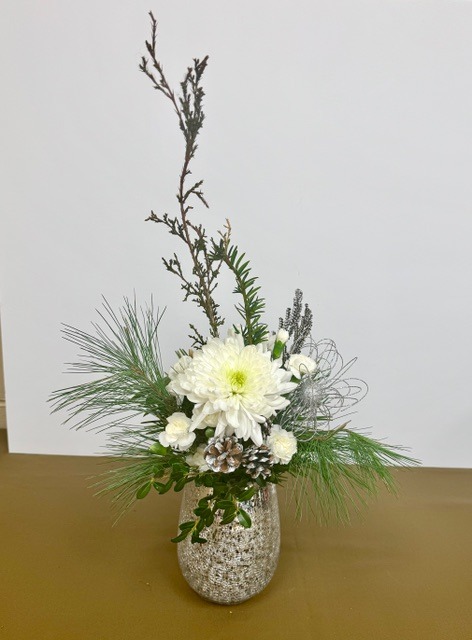
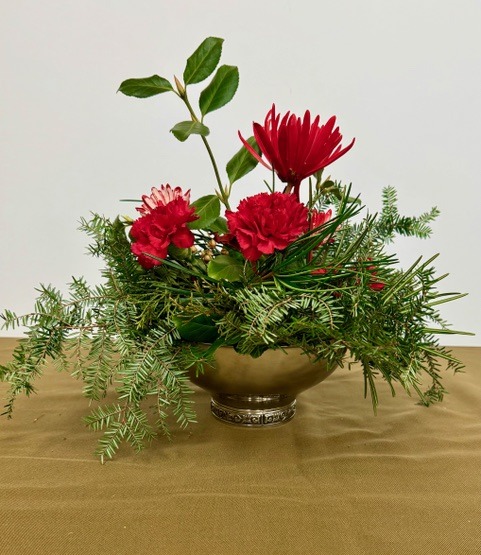
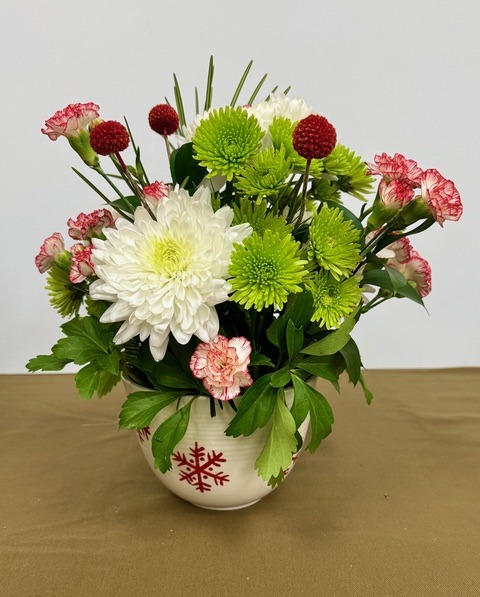
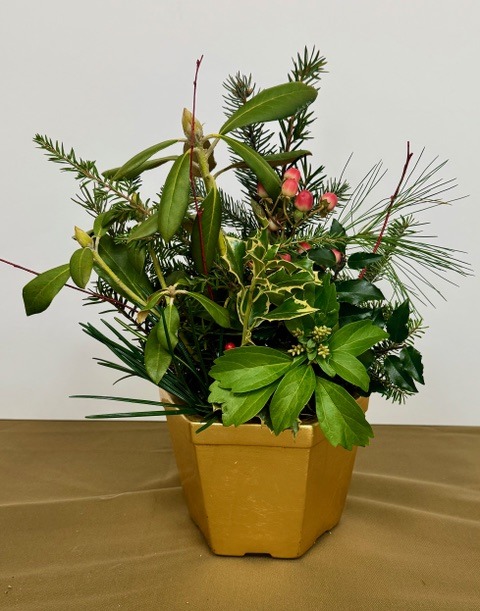
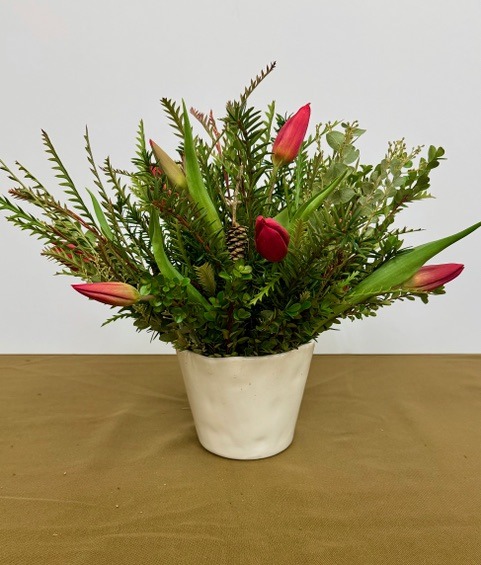
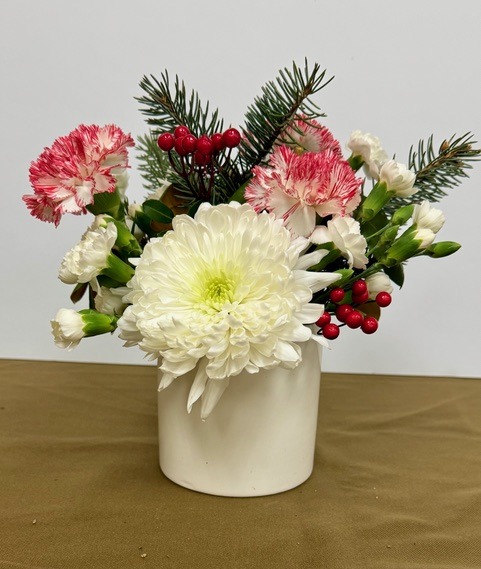
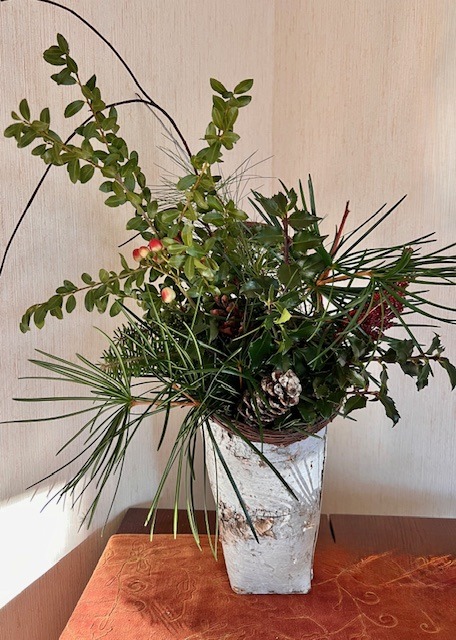
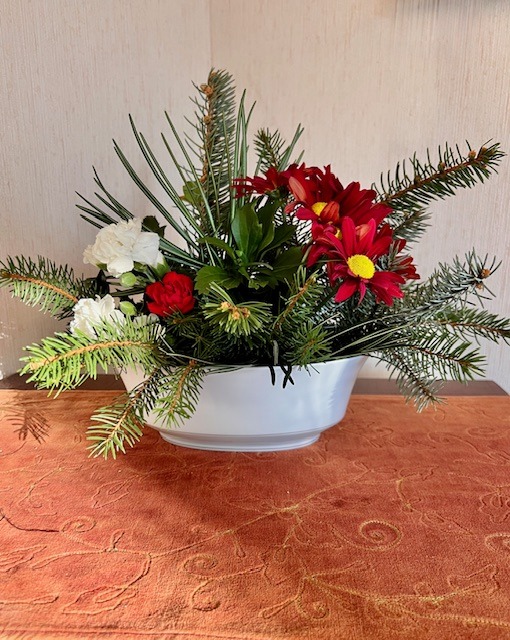
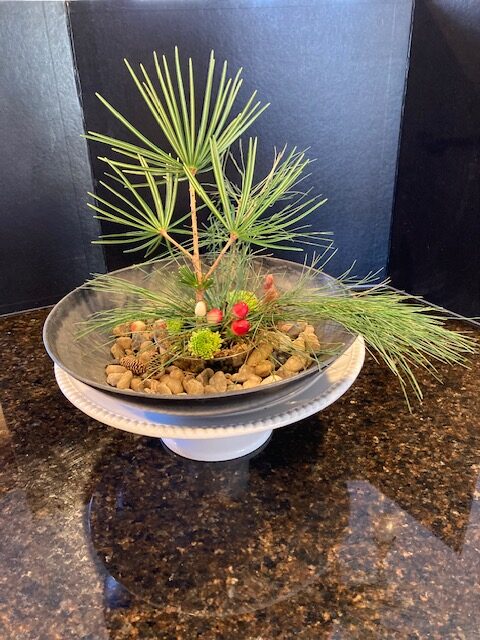
Club News
EAGC received recognition on Facebook from the Stratham Historical Society in December: “We want to thank the ladies from Exeter Area Garden Club who did a phenomenal job making our building beautiful and festive, just in time for our Open House.” They are: Lee Cooper, Ellen Johansen, and Kathy Maskell.”
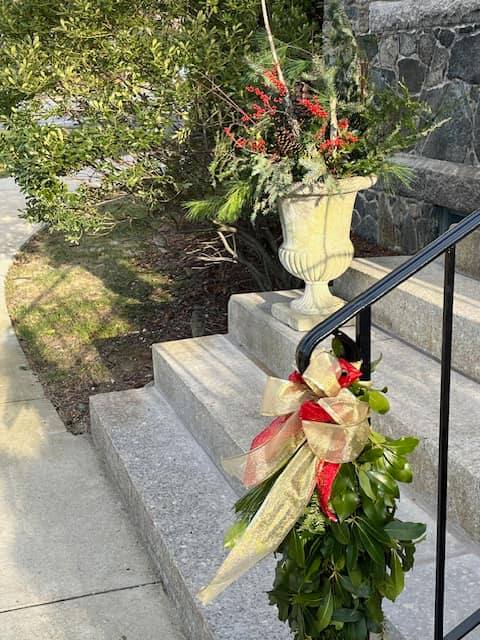
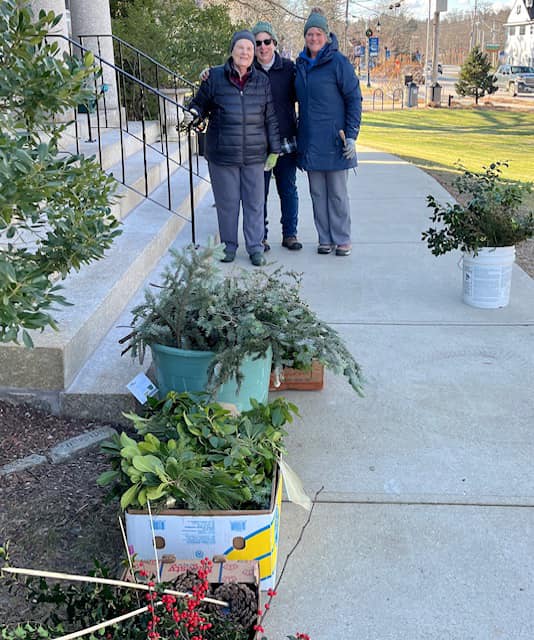
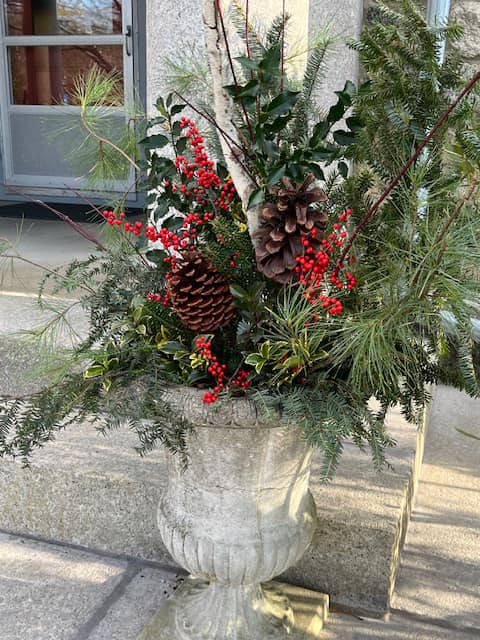
Dates to add to your calendar:
- Our annual yard/plant sale is Friday May 9 and Saturday May 10. We have the same location (the Stratham Municipal Center) and need member help for advertising. A guideline is being developed so we know what items to donate.
- The yearbook has the wrong date for the May program. It is May 15, not May 22.
- Our June Luncheon & Plant Auction will be sometime from June 5th to the 12th. The committee is firming this up.
- We have secured the date of December 4th, 2025, for next year’s holiday party.
The Nominating Committee soon will be looking for members to fill open board and committee positions.
Volunteers for the Scholarship Rewrite Group and the Website Research Group have started their efforts.
At the Board meeting on January 7, we voted to accept the flagpole garden at the Stratham Fire Station as one of our community areas to maintain. The Civic Beautification committee will be organizing a maintenance schedule.
Our January 16 speaker is Lindsay Watkins. Lindsay is the Field Specialist in Forest Resources for Strafford and Belknap County. She is passionate about our native trees and has a slide show talk on “Cultivating Resilience in Landscape Trees”. Our meetings start with set-up at 8:30, social time at 9 a.m., and end at about 11:30. The Morgera Room at the Fire Station is available for your meeting needs till 1 p.m.
Other Nature News
Join NH Audubon this winter for the 38th annual Backyard Winter Bird Survey on February 8th and 9th, 2025. This statewide effort invites participants to observe and report the birds visiting their backyards, helping track winter bird populations and trends across New Hampshire. For info, click here.
The Massachusetts Pollinator Network hosts a free presentation by Dr. Avalon Owens, who will speak about the impacts of artificial light on insects and what it means for insect conservation. Dr. Owens will also share why insect conservation is important and how we can help. Online Zoom meeting, January 28 from 7:00 – 8:15pm. Sign-up is free & open to all. Register here.
Thanks again to our intrepid photographer, Ann H.